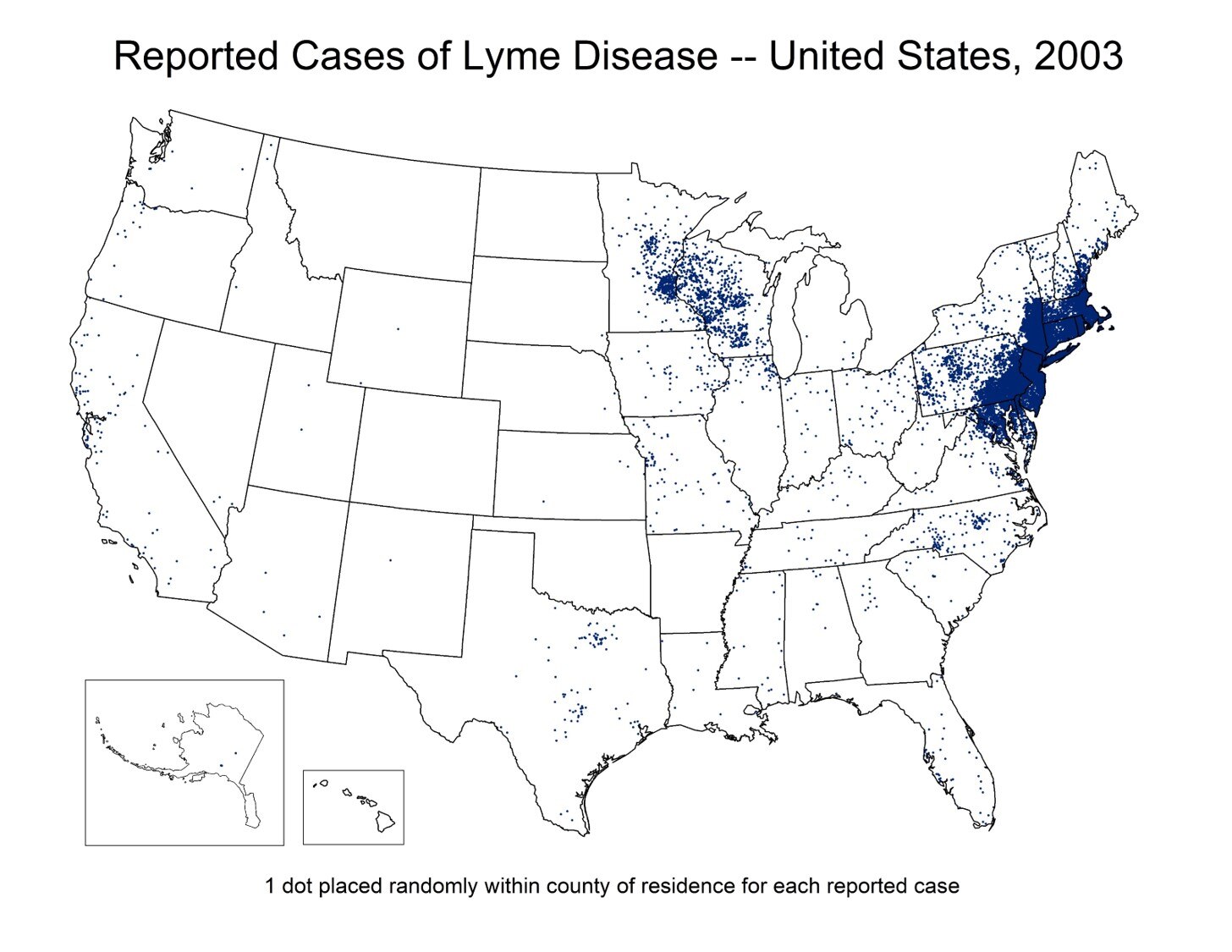
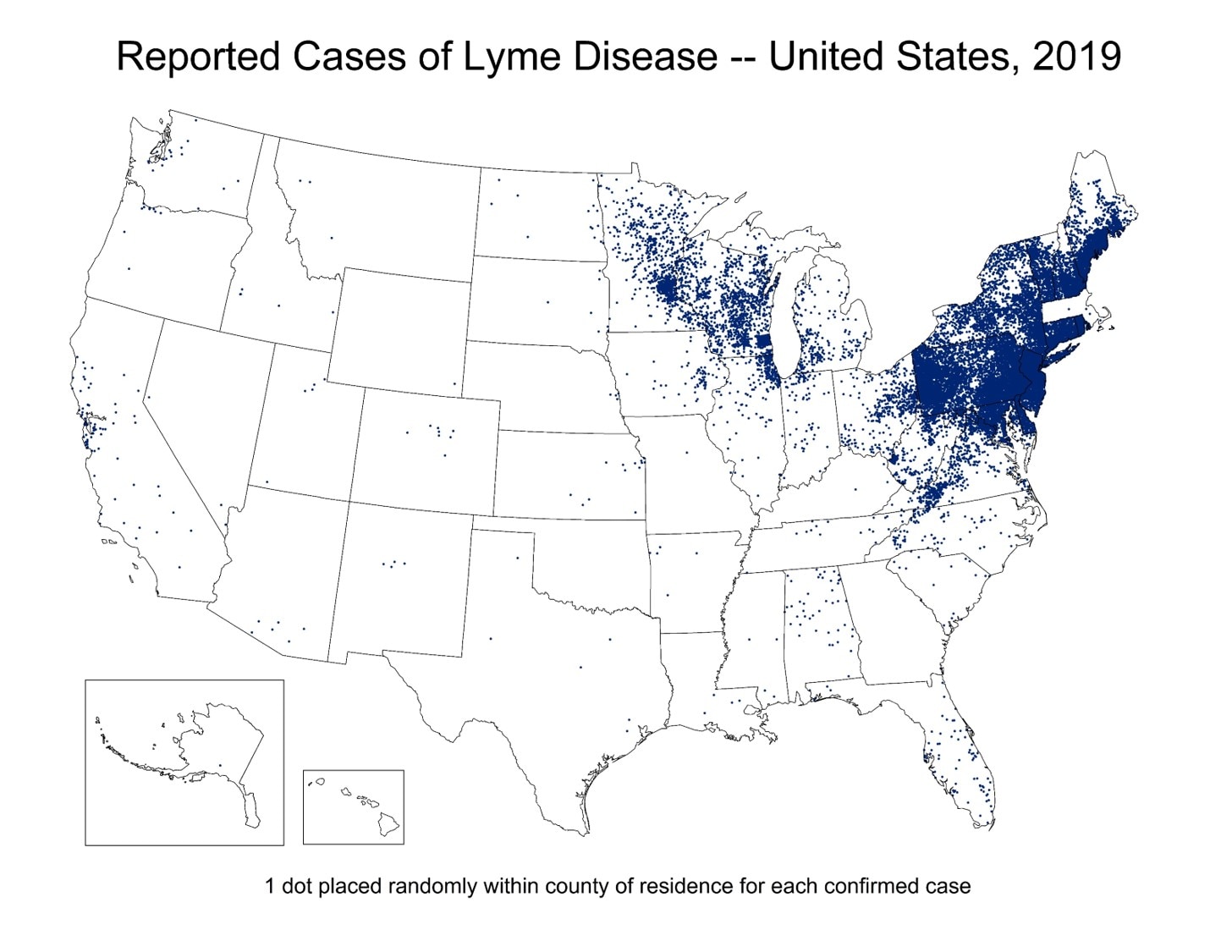
Figure: Lyme disease occurs primarily in the upper midwestern, mid-Atlantic, and northeastern United States. It is transmitted by blacklegged or “deer” ticks, which also transmit the agents of anaplasmosis, babesiosis and Powassan virus disease. The lack of dots in Massachusetts in 2018 is due to a difference in reporting standards, not an absence of Lyme disease.
An estimated 476,000 Americans are diagnosed and treated for Lyme disease each year. It is the most common vector-borne disease in North America. The incidence of Lyme disease in the United States has nearly doubled since 1991, from 3.74 reported cases per 100,000 people to 7.21 reported cases per 100,000 people in 2018. Maine, Vermont, and New Hampshire have experienced the largest increases in reported case rates. Climate is one of several factors that define when and where Lyme and other tickborne diseases are most likely to occur. Mild winters and warmer early spring temperatures are expanding the seasons when ticks are active, resulting in more weeks of the year that Americans are at risk of tick encounters. Expansion of the range of infected ticks puts an increasing number of communities at risk for Lyme and other tickborne diseases.
Which Seasons Are People Most Often Bitten by Blacklegged Ticks?
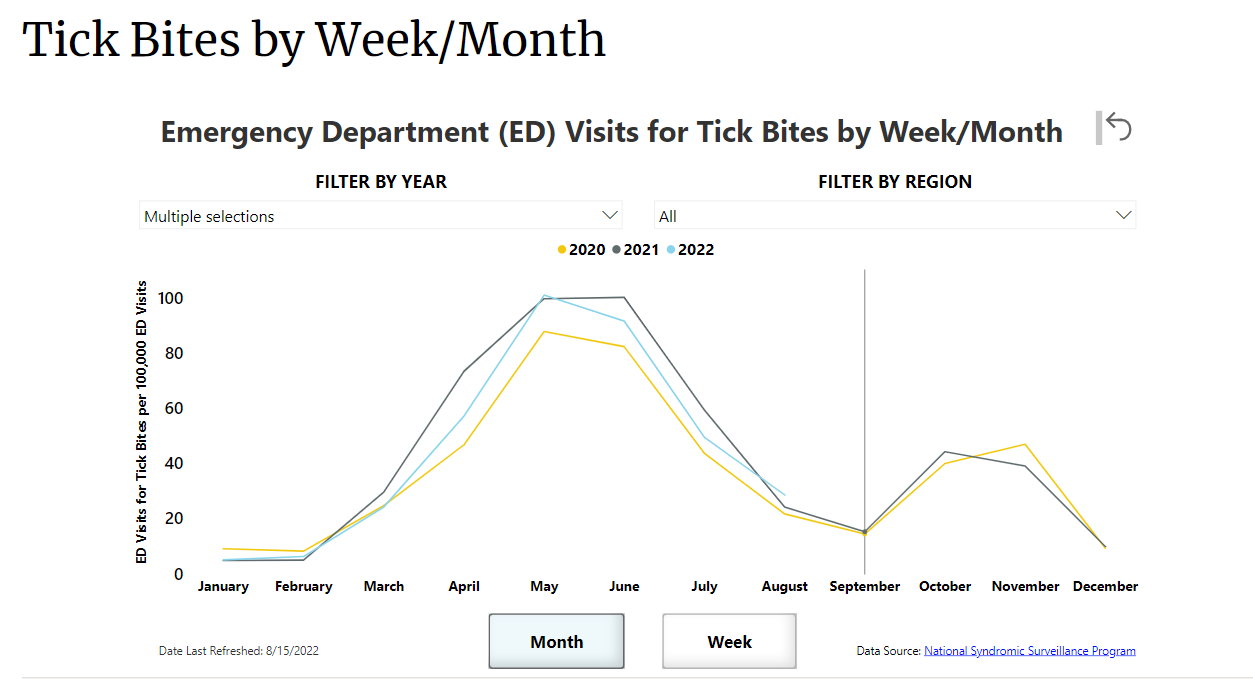
Figure: Emergency department (ED) visits for tick bites by month for 2020 – 2022. This graph shows 2022 following a similar pattern to previous years, with tick bites spiking in the spring. If this trend continues, there may also be a second, smaller spike in the fall.
In areas in the eastern US where Lyme disease cases are common, people are most likely to be bitten by blacklegged ticks at two times of year: from April through July when nymphs are active, and in September through November when adults are active. Nymphal ticks, which feed in late spring and early summer, pose a particularly high risk due to their abundance and small size (about the size of a poppy seed), which makes their detection difficult. However, adult deer ticks can also transmit the infection and may be more likely to be infected themselves. However, owing to their larger size (about the size of sesame seed), adult ticks are often detected and removed from people before disease transmission can occur. Lyme disease can be prevented by avoiding tick bites and prompt removal of ticks on people.
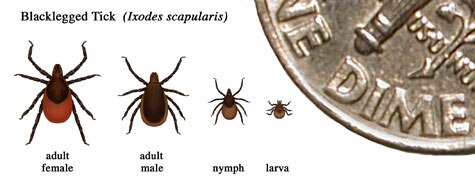
Image source: https://www.cdc.gov/lyme/transmission/index.html
Figure: The different sizes of the blacklegged tick through 4 stages: egg, larvae, nymph, and adult.
How to Prevent Tick Bites and Tickborne Diseases
Tick bite prevention can take place before and after spending time outside. Before you go outdoors, use Environmental Protection Agency (EPA)-registered insect repellents, treat clothing and gear with products containing 0.5% permethrin, and talk to your veterinarian about the best tick prevention products for your dog. If possible, when spending time outside, avoid wooded and brushy areas with high grass and leaf litter where ticks may live. After spending time outdoors, check your body for ticks, take a shower within 2 hours, and check your clothing, gear, and pets for ticks that may have caught a ride into your home. You may also consider using landscaping methods to prevent ticks in the yard.
Resources to Reduce Health Risks Associated with Lyme Disease
The Centers for Disease Control and Prevention (CDC) Lyme Disease site has information on how to avoid Lyme Disease, common symptoms, and treatment. The Tick Bite Bot can assist you in removing attached ticks and seeking health care, if appropriate, after a tick bite. CDC’s Tickborne Diseases of the United States offers information on tick identification, tickborne diseases, and treatment. The CDC has also issued guidance for clinicians on caring for patients after a tick bite. CDC provides maps showing regions where ticks live and the counties where deer ticks and their associated pathogens have been detected in US counties.
The Food and Drug Administration (FDA) has additional information on symptoms, treatment, and prevention for people and pets. The Environmental Protection Agency (EPA) has a tool to help find the repellent that is right for you.
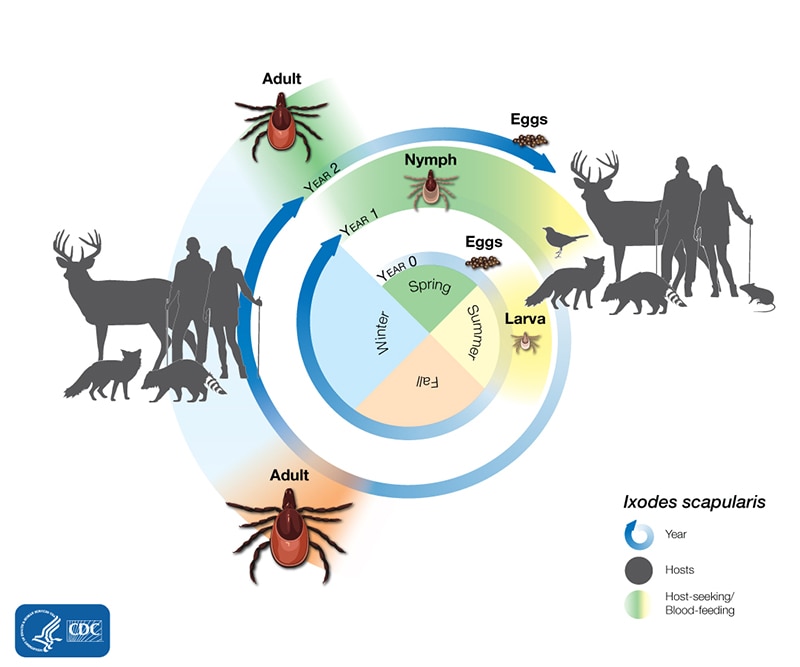
Image source: https://www.cdc.gov/ticks/life_cycle_and_hosts.html
Figure: The life cycle of the blacklegged tick, Ixodes scapularis, generally lasts 2 years, during which it goes through 4 stages: egg, larvae, nymph, and adult.

